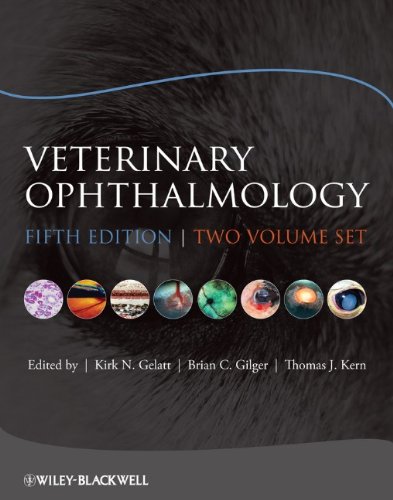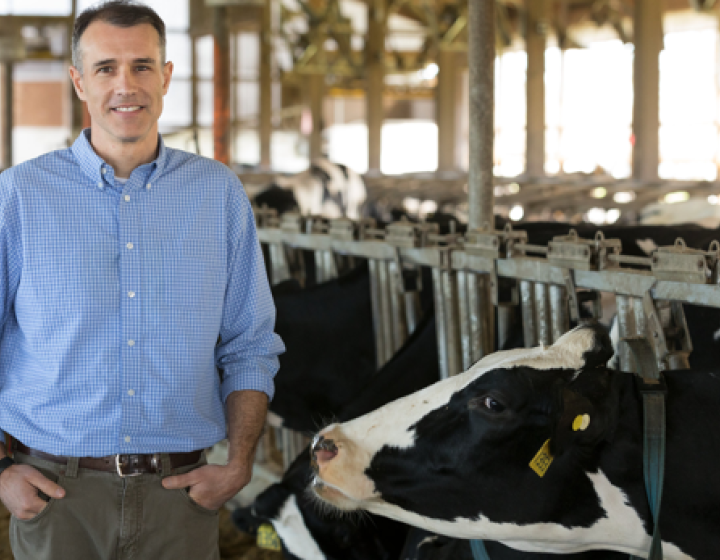Faculty lends expert eyes to editing leading ophthalmology text
 Casting an eye over the biggest textbook in veterinary ophthalmology grows more daunting with each edition. Seeing the book’s contents swell since its first edition in 1980, Cornell veterinary ophthalmologist Dr. Thomas Kern has stepped in as a co-editor of its latest edition to help manage its growing wealth of knowledge.
Casting an eye over the biggest textbook in veterinary ophthalmology grows more daunting with each edition. Seeing the book’s contents swell since its first edition in 1980, Cornell veterinary ophthalmologist Dr. Thomas Kern has stepped in as a co-editor of its latest edition to help manage its growing wealth of knowledge.
Veterinary Ophthalmology, Fifth Edition is a fully updated version of the gold-standard reference for animal eye diseases and treatments released in May 2013. As one of the book’s internationally renowned contributing authors, Kern has written the chapter on exotic animal ophthalmology for several editions. The book’s formerly solo editor, Dr. Kirk N Gelatt, requested his and Dr. Brian Gilger’s (from North Carolina State University) help in editing the latest version, which has grown to nearly 2,200 pages, spanning two thick books.
“This book is considered the world bible of veterinary ophthalmology,” said Kern. “It has everything on the subject, all exhaustively referenced. It’s the go-to book for residents and clinicians. The board certification exam in this field draws heavily from it.”
Veterinary Ophthalmology is a comprehensive resource for authoritative information on the subject worldwide, serving as a key reference for anyone interested in veterinary or comparative ophthalmology. Its main audience includes veterinary ophthalmology specialists and residents, though the condensed version, Essentials of Veterinary Ophthalmology, remains a staple text in veterinary schools and the offices of primary care clinicians.
The book comprises four sections: basic vision science, foundations of clinical ophthalmology, canine ophthalmology, and special ophthalmology. Kern edited the special section, which covers cats, horses, food animals, camelids, lab animals, rabbits, exotics, ocular manifestations of systemic diseases, and neuro-ophthalmology. Kern also updated and expanded his chapter on exotic animals, inviting a new co-author who specializes in aquatic animals to enrich it with novel information on marine mammals and penguins. Fellow College ophthalmology professor Dr. Eric Ledbetter co-authored the chapter on Diseases and Surgery of the Canine Cornea.
New chapters cover ophthalmic genetics and DNA tests, microsurgery, photography, camelid, and rabbit ophthalmology. A companion website offers images from the book as downloads and links to the references. The package retails at $400.
“I’m very flattered to be asked to help edit this text,” said Kern. “It has had such a profound impact on our specialty and is sold in several languages all around the world. Cornell’s Flower-Sprecher Veterinary Library has been generous in making this expensive text available to the Cornell community to benefit those we serve.”
The College’s Flower-Sprecher Library has purchased two copies for the Cornell University Hospital for Animals: one for the Ophthalmology Service and one for the Community Practice Service. A third copy is available in the Cornell library system and any Cornell affiliate can access an electronic copy through the library to see the full text and color pictures.




